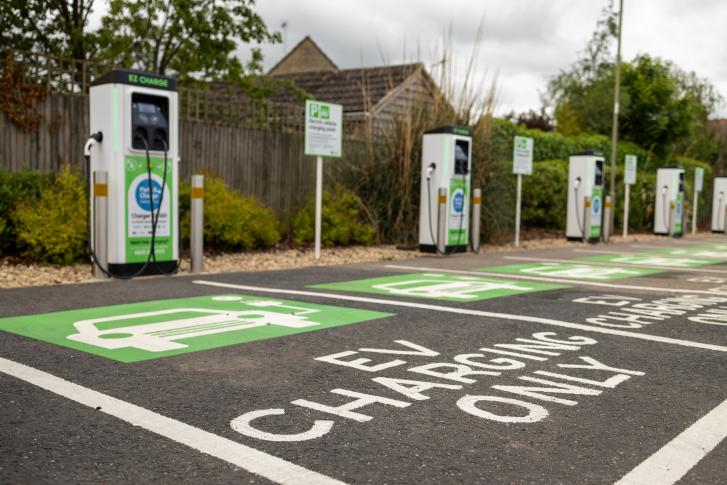
In this guest article, Peter Shadbolt, Chief Technology Officer at Bicester-based EZ-Charge discusses how Park & Charge Oxfordshire serves as a model for the future of local authority charging.
Since the government announced its EV infrastructure target five years ago, the rate of progress in the UK has followed a steep upward curve.
Momentum is growing, with an increase of 10,000 charging points delivered between February and October of 2023 alone.
While this momentum is crucial and makes the UK a world leader in the transition to EV, there is still quite a way to go to achieve the Government target of 300,000 charging points by 2030.
With convenience, reliability and cost being key considerations for EV users and site owners alike, it is crucial that quality as much as quantity guides the delivery of EV charging infrastructure going forward.
Clearly, this requires buy-in from business, but without collaboration with the public sector, the UK will not be able to deliver an EV charging network that caters adequately for a broad range of users across a wide variety of sites.
With applications now open for the first tranche of Local Electric Vehicle Infrastructure (LEVI) funding, the important role of local authorities in building the UK’s charging network is more apparent than ever before.
Our experience of Park & Charge Oxfordshire saw us work closely with the county and four district councils to deliver 250 charging points across 20 sites to create the largest public-facing network in Oxfordshire.
This success story has made Oxfordshire one of the better-prepared counties in the UK for the switch to EV.
But what exactly did we learn from the experience, and how can it act as the gold standard to be replicated across the rest of the country?
Through the partnership, we found that local authorities have a unique opportunity to contribute to the future development of the UK’s charging infrastructure: by unlocking the potential of publicly owned car parks.
Such local authority sites are ideally suited to host community charging hubs.
Public car parks are designed with accessibility in mind and are conveniently situated at the heart of residential areas, with local authorities able to identify the best sites based on the needs of local populations.
This extends EV charging access to those who may not have the option of installing a charger at home, thereby encouraging more people to make the switch to EV.
Having multiple chargers grouped in one place makes car park charging hubs more cost-effective via easier installation and maintenance, and also serves to strengthen confidence with EV users who can be sure of securing a charging point.
Local authority charging hubs also offer the possibility of overnight charging, making efficient use of space that may otherwise be left vacant, and providing an attractive choice to EV users by offering lower cost dual band tariffs.
To meet national targets, the UK must continue to increase the rate of installation of charging points. However, to truly meet the needs of all EV drivers, these targets must come in the form of a resilient, accessible charging network.
This means an effective mix of charger types, providing both rapid and longer and overnight charging, across a wide variety of sites.
Local authority charging sites are a key part of this puzzle, as Oxfordshire has demonstrated, and now is the right time to seize the opportunity of government funding to build your own local success story.




